Science 2.9
Organisms and environments. The student knows that living organisms have basic needs that must be met for them to survive within their environment. The student is expected to:
- (1) identify the basic needs of plants and animals;
- (A) identify factors in the environment, including temperature and precipitation, that affect growth and behavior such as migration, hibernation, and dormancy of living things; and
- (B) compare the ways living organisms depend on each other and on their environments such as through food chains.
- Free Plan
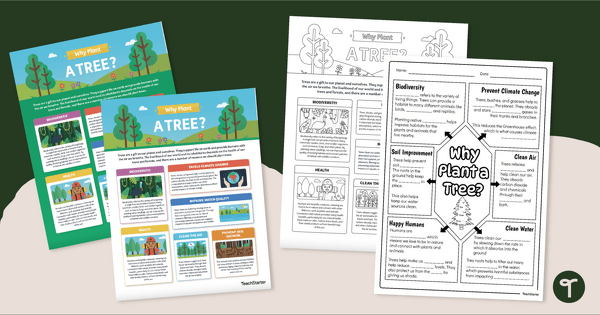
Why Plant a Tree? Infographic Analysis Activity & Posters
Teach about Arbor Day or Earth Day with an infographic poster and a cloze note-taking worksheet about the importance of trees in our environment.
- Free Plan
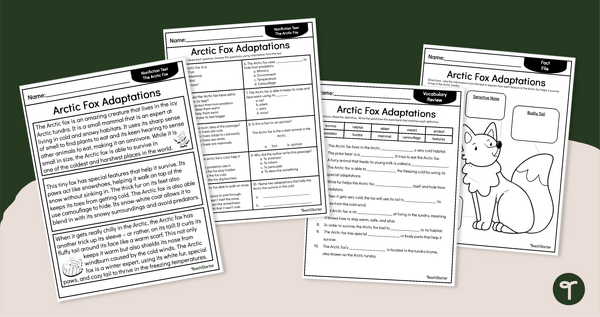
Arctic Fox Adaptations - Free Comprehension Worksheet
Read and learn about Arctic fox adaptations with a set of printable Reading Comprehension Worksheets for 2nd and 3rd grade.
- Plus Plan
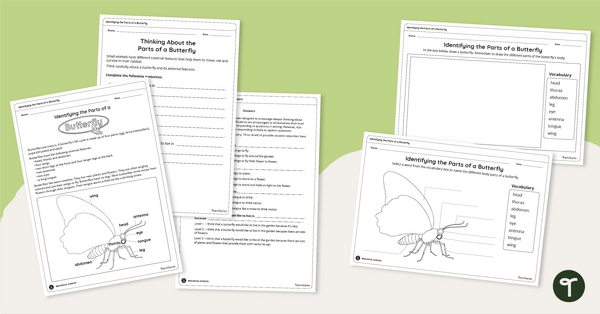
Parts of a Butterfly - Labeling Activity Sheets
Learn about the anatomy of a butterfly with a printable reading passage and butterfly labeling worksheets.
- Plus Plan
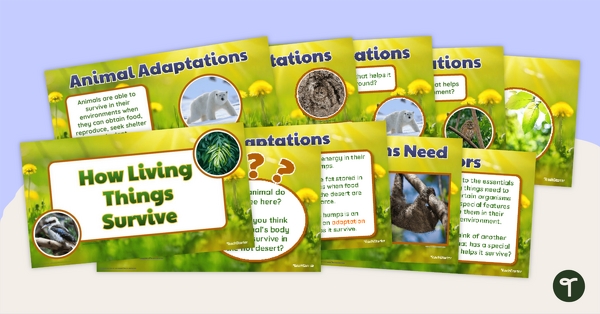
How Living Things Survive – Teaching Presentation
Use this 13-slide teaching presentation to teach your students about the physical characteristics of animals and plants, which help them meet their basic needs.
- Plus Plan
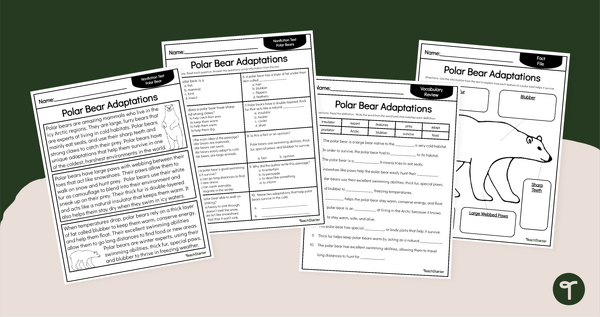
Polar Bear Adaptations Reading Comprehension Pack
Learn about the physical adaptations of the polar bear with a set of printable reading comprehension worksheets for 3rd grade.
- Free Plan
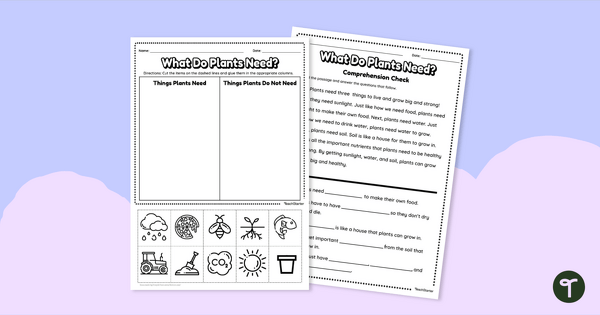
What Do Plants Need? Worksheets
Cut, paste, and read about what plants need to survive with a pair of printable plant worksheets.
- Plus Plan
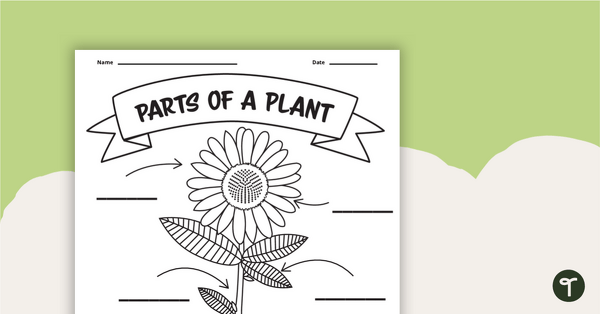
Parts of A Plant Worksheet
Label the parts of a plant with a printable plant worksheet.
- Plus Plan
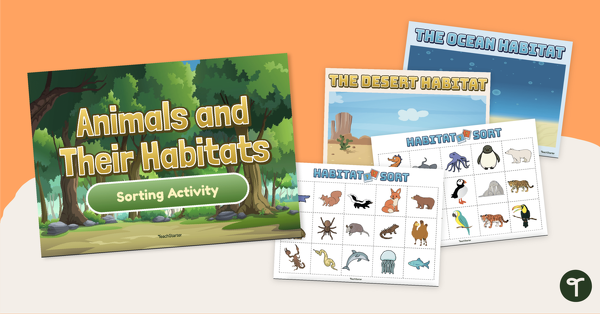
Animals and Their Habitats - Sorting Activity
Discover the habitats that are home to Earth’s wildlife with a printable animal habitat sorting activity.
- Plus Plan
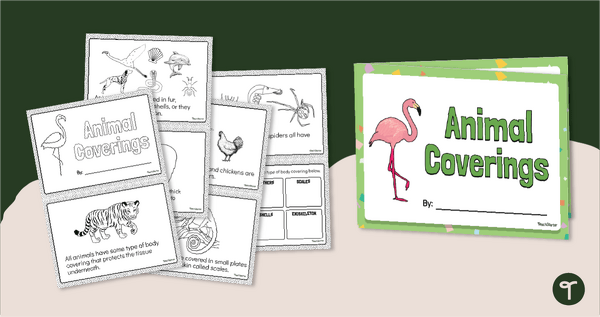
Animal Body Coverings Mini Book
Read and learn about the characteristics of animals with a printable Animal Body Coverings Mini Book.
- Plus Plan
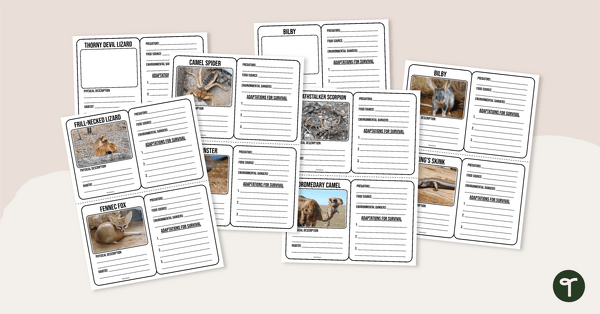
Desert Animal Adaptations - Trading Card Templates
Discover amazing desert animals’ adaptations and display your learning with printable animal trading card templates.
- Plus Plan
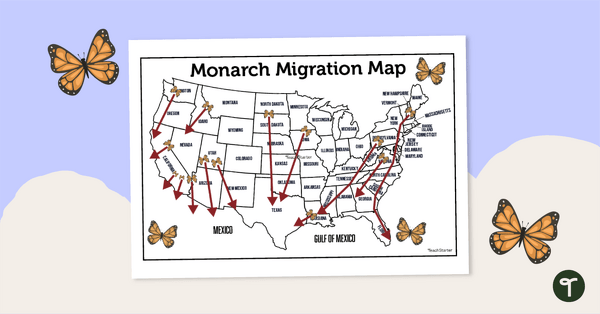
Monarch Butterfly Migration Map
Use a Monarch Butterfly Migration map to introduce your students to a natural phenomenon of migratory animal behavior.
- Plus Plan
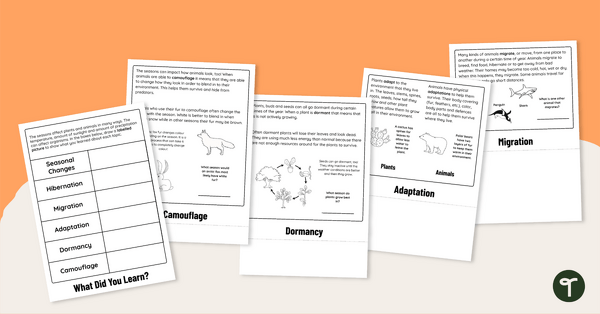
Plant and Animal Adaptations Flipbook
Use this fun flipbook to teach students about adaptations while allowing them to connect to prior knowledge by answering questions on each page.
- Free Plan
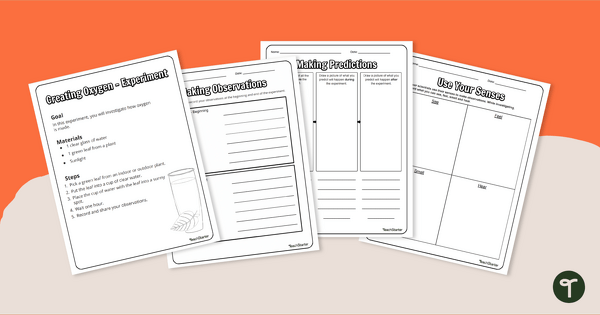
Creating Oxygen - Experiment
Investigate how oxygen is made with a hands on plant experiment.
- Plus Plan
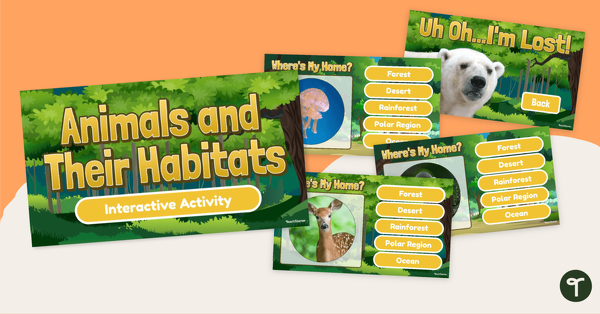
Animals and Their Habitats- Interactive Activity
Help a lost polar bear (and his friends) return to the correct habitat with a Google Slides interactive activity.
- Plus Plan
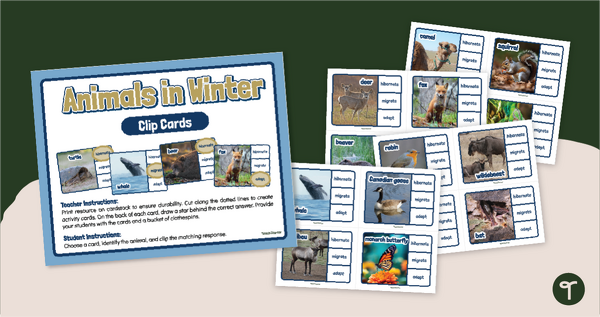
Winter Animal Adaptations - Clip Cards
Discover which behavioral adaptations animals use to survive the winter with a set of Animals in Winter Clip Cards.
- Plus Plan
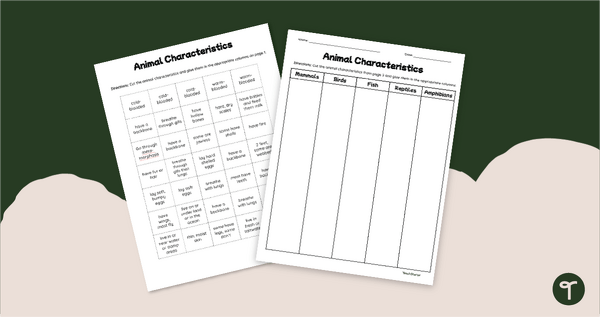
Characteristics of Animal Classes - Cut and Paste Worksheet
Identify the characteristics and features of different animal classifications with a cut-and-paste activity.
- Plus Plan
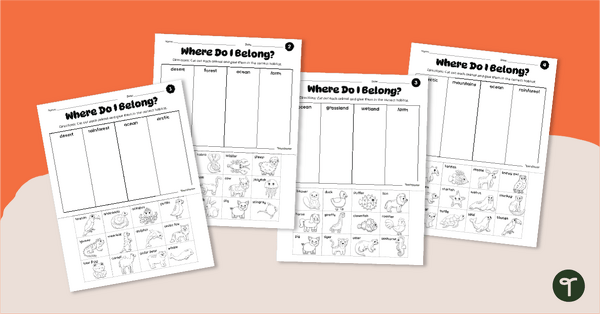
Animals and Their Habitats - Cut and Paste Worksheets
Match the animals and their habitats with a pack of printable cut and paste worksheets.
- Plus Plan
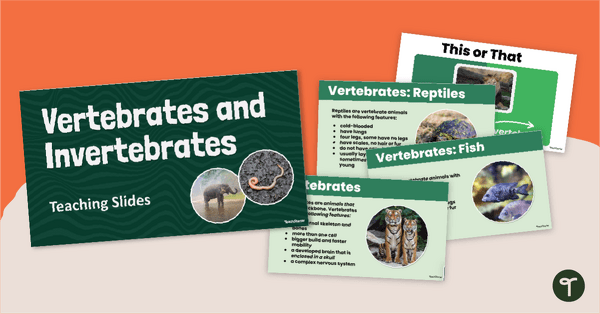
Vertebrates and Invertebrates Teaching Slides
Teach your students about the characteristics of vertebrates and invertebrates with an interactive teaching slide presentation.
- Plus Plan
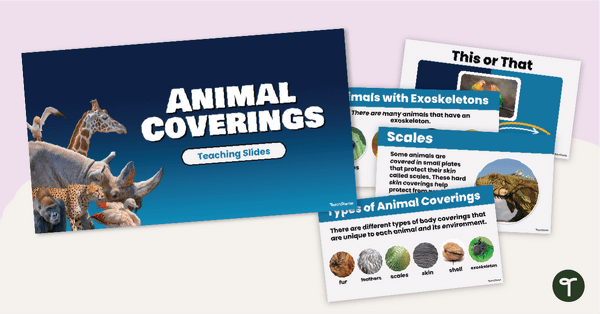
Animal Coverings Teaching Slides
Discover animals with scales, shells, fur, and other body coverings with an interactive teaching slide deck.
- Plus Plan
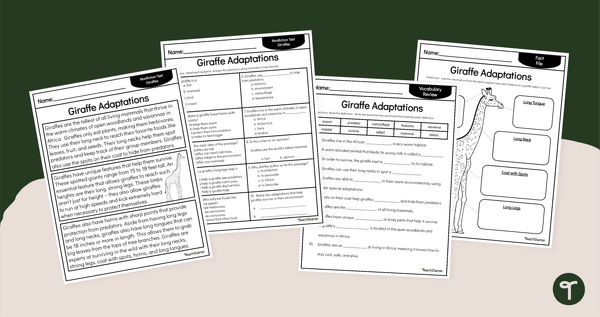
Giraffe Adaptations Reading Comprehension - 3rd Grade
Read and learn about giraffe adaptations with a set of 3rd grade reading comprehension worksheets.
- Plus Plan
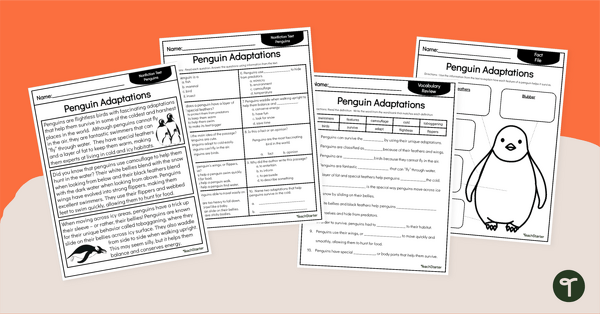
Penguin Adaptations Printables - Comprehension Worksheets
Explore the fascinating world of penguins and their adaptations with our set of printable Reading Comprehension Worksheets for 2nd and 3rd graders.
- Plus Plan

Types of Insects - Fact Cards
Discover facts and features related to a variety of insects with a handy set of insect fact cards.
- Plus Plan
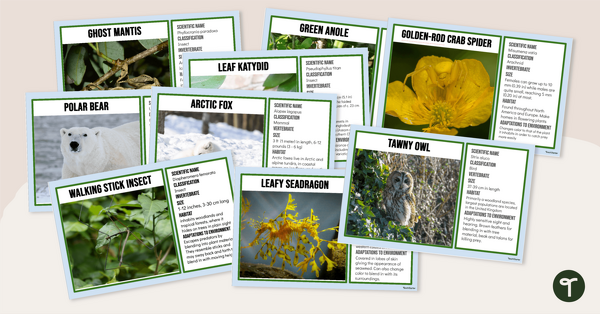
Animals that Use Camouflage - Fact File Cards
Discover animals that camouflage to survive using these printable Animal Fact File cards.
- Plus Plan
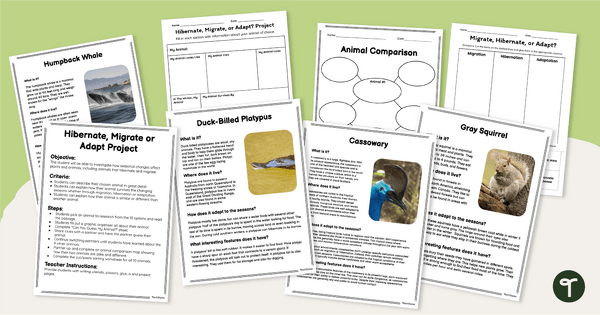
Adapting, Migrating, & Hibernating Animals Research Project
Set this classroom project for students to explore the topic of how seasons affect animals, and develop a species-specific profile on a chosen animal.
- Plus Plan
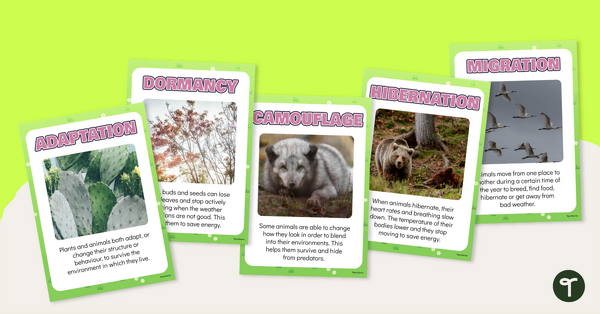
Plant & Animal Adaptations Poster Set
Display these informative posters in your 2nd grade classroom to remind students of the five ways animals and plants adapt to seasonal changes in their environment.
- Plus Plan
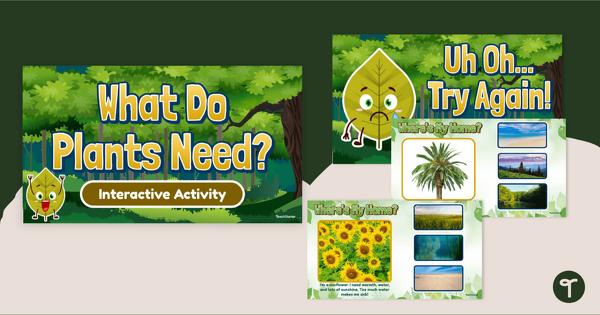
What Do Plants Need? Plant Habitat Interactive Game
Help some lost plants return to the correct habitat with a Google Slides interactive activity.
- Plus Plan
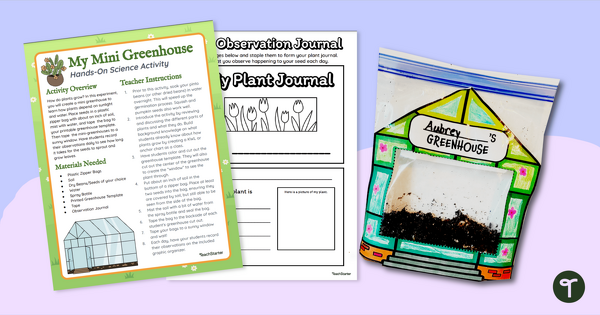
Beans in a Bag - Mini Greenhouse Experiment
“Grow” your students’ knowledge of plant life cycles with a printable greenhouse template and observation journal.
- Plus Plan
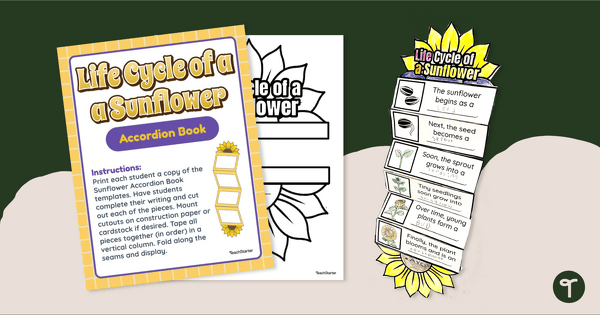
Life Cycle of a Sunflower Accordion Book
Get crafty and teach your students the stages in the life cycle of a sunflower with a fun accordion book science craft.
- Plus Plan
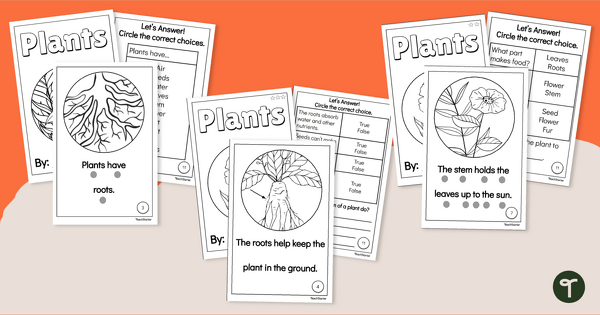
Parts of a Plant Mini Books K-2
Read and learn about the parts of a plant with a set of differentiated printable readers.
- Free Plan
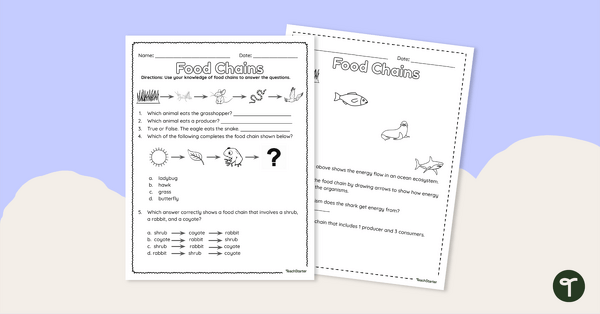
Food Chains – Worksheet
Use this worksheet to identify and describe the flow of energy in a food chain.
- Plus Plan
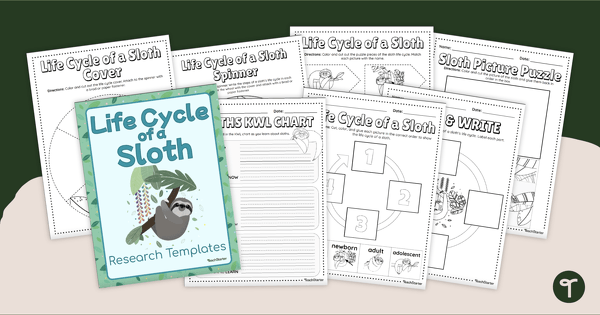
All About Sloths - Animal Life Cycle Worksheets
Help your students learn about sloths using this research project booklet.
- Plus Plan
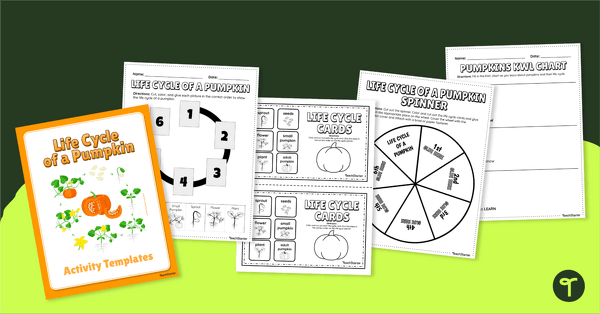
Life Cycle of a Pumpkin Activity Templates
Organize, record, and display information about the life cycle of a pumpkin with these activity templates.